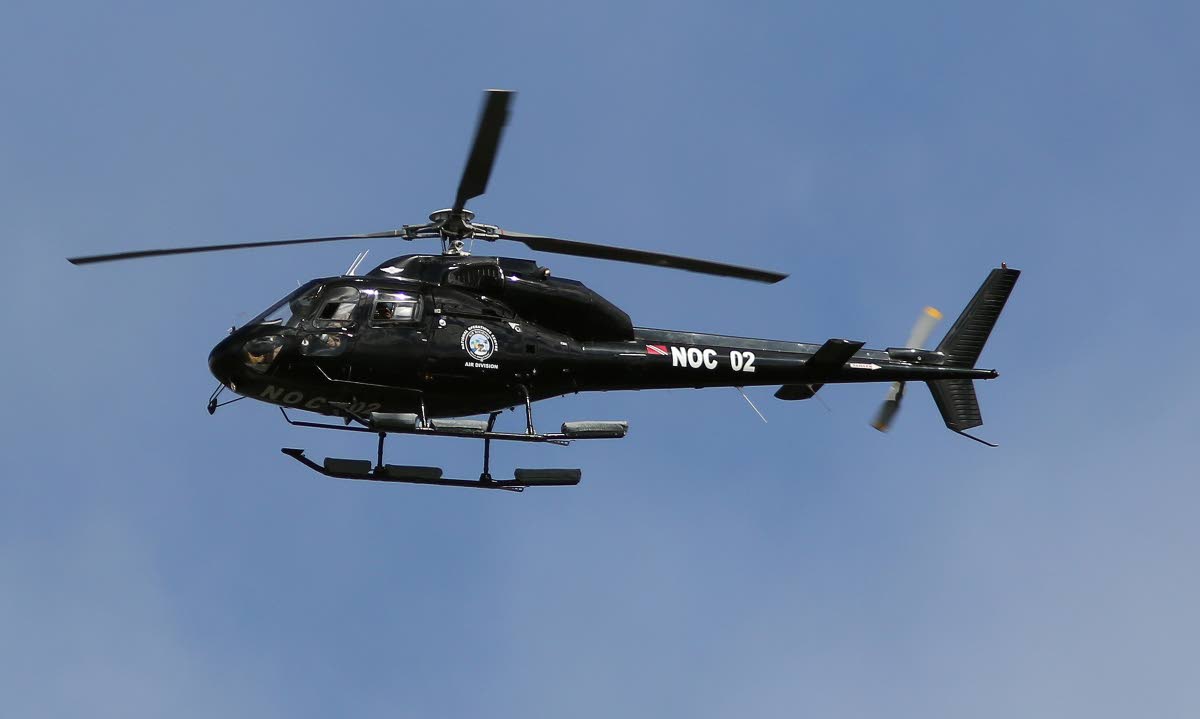By Newsday Reporter
Copyright newsday

Trinidad and Tobago has long struggled with porous borders, a crucial vulnerability exacerbated by its strategic location approximately seven miles from Venezuela. This vulnerability facilitates a wide range of transnational criminal activities, including illegal immigration, human trafficking and the smuggling of weapons and drugs.
Border protection is a complex, multi-layered effort that integrates technology, policy and inter-agency co-operation to manage and secure TT’s maritime and shoreline areas.
Surveillance and detection systems using modern technology is critical for comprehensive coastal surveillance, providing real-time situational awareness and the ability to detect threats across territorial airspace and waters.
Billions of taxpayers’ dollars were invested in air assets and aerial surveillance systems to enhance border security with very little return.
On September 18, 2008, during the TT Air Guard’s fourth anniversary commissioning, national security minister Martin Joseph announced the acquisition of four AgustaWestland (now Leonardo) AW139 helicopters, at a cost of $ 2.2 billion.
The minister stated that the role of the helicopters, to be operated by the Air Guard, would include surveillance and reconnaissance support, border protection, firefighting, maritime search and rescue and air interdiction.
To fulfil their stated mission, the AW139 helicopters were configured with state-of-the-art advanced avionics packages, including a radar system coupled with a forward-looking infrared (FLIR) system for detecting maritime targets and transmitting real-time video feeds to the land-based command centres for strategic and tactical decision-making.
On April 28, 2011, two of the four AW 139 helicopters arrived at the Air Guard base at Piarco International Airport.
AgustaWestland and TT executed a five-year agreement to provide flight operations, maintenance and training support in accordance with civil aviation regulations at a monthly cost of approximately US$3.4 million.
On June 29, 2017, Prime Minister Dr Keith Rowley announced that cabinet, having considered a proposal to engage another provider for AW139 operations and maintenance support services, decided that TT could not afford to spend $200 million a year to maintain the four helicopters and grounded the AW139 fleet.
At that time, state-owned National Helicopters Services Ltd (NHSL) was acquiring AW139 helicopters.
The Air Guard AW139 helicopters could have been easily integrated into the NHSL fleet, resulting in tremendous savings in operations and maintenance costs.
In May 2019, in responding to media questions about the Air Guard, then Minister of National Security Stuart Young announced that an integrated Air Unit is expected to be introduced in the country’s national security apparatus soon.
Young stated, “I intend to go to cabinet very shortly to ask for the approval of helicopters for an air unit that will be manned predominantly by the Air Guard.”
Young added that the assets will be available to various arms of the national security apparatus.
The assets will be based in Cumuto, but they will be assets that all three arms of national security can tap into.
In May 2021, during the passing out parade ceremony of recruits at the Tetron Barracks, the Minister of National Security announced that the government is seeking to reintegrate one of the AW139 helicopters into service to the Coast Guard, as well as any other aerial requirements, “in support of the business of national security.” This never happened.
Equally important is the prevention of penetration of TT’s sovereign airspace by unauthorised aircraft and unmanned aerial vehicles (UAVs) that may be engaged in illicit activities.
In 2007, the TT Civil Aviation Authority (TTCAA) developed specifications for a secondary surveillance radar (SSR) system for air navigation purposes.
The radar package included a primary surveillance radar (PSR) system at a cost of approximately $54 million, with adequate range for the surveillance of TT’s sovereign airspace.
Once the aircraft is airborne, the SSR continuously interrogates the ATC transponder, which replies to each interrogation signal by transmitting encoded data such as the aircraft type, flight number, heading, speed and position. This information is displayed on the air traffic controller’s radar screen.
However, aircraft engaged in illegal activities can switch off the transponder which makes the aircraft invisible to SSR.
On the other hand, a PSR system, independent of pilot’s actions, can detect all moving airborne objects and display the “targets” on the radar screen.
In 2006, an Israeli-made 360-degree ELM-2226 Advance Coastal Surveillance Radar (ACSR) system was purchased and which is perhaps the best coastal radar system in the world.
In 2018, the system was upgraded at an estimated cost of TT $ 50.5 million.
The radar can automatically detect and track more than 900 targets under adverse sea conditions.
The ELM-2226 has a detection range of 20 nautical miles for rubber boats, 60 nautical miles for patrol craft and up to the radar horizon for large ships.
A main objective was to integrate both the coastal radar data and the airborne PSR data for display on a single screen at the national security command centre. The integration software can differentiate maritime targets from airborne targets using different colours displaying craft type, location, heading, speed and altitude. In this way, the command centre can have real-time “sight” of all aircraft and maritime vessels in TT’s sovereign territory.
The equipment for providing the PSR data to the Coast Guard command centre was never installed for reasons best known to the Coast Guard.
The integration software was never developed due to no agreed-upon configuration for the display format of the radar data.
In 2016, the TTCAA met with the Minister of National Security and the Chief of Defence Staff and offered to provide the technical resources for the installation of the data link and fund the provision of the integration software. The TTCAA offer was declined.
The data link equipment is presently stored in boxes at the TTCAA facilities.
In the meantime, the four AW139 helicopters, winching equipment and the bambi buckets are presently lying idle and deteriorating at the Air Guard Piarco base with depreciating values.
In these times of scarce financial resources, the way forward is to enter into negotiations with Leonardo for the return all four AW139 helicopters.
Two of the four AW139 helicopters should be completely overhauled and returned in full operational configuration.
One AW139 helicopter can be based at Cedros for rapid response operations.
The airborne PSR system requires a software upgrade before integration with the ELM-2226 ACSR coastal radar system.



